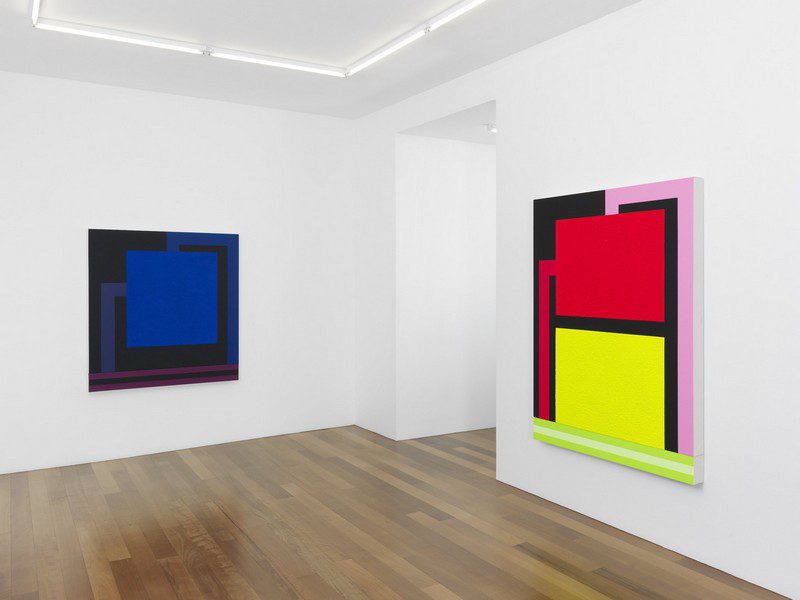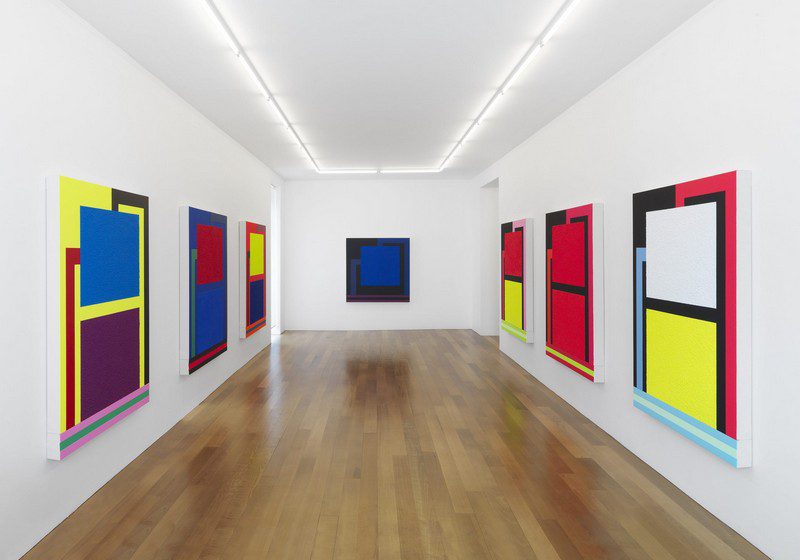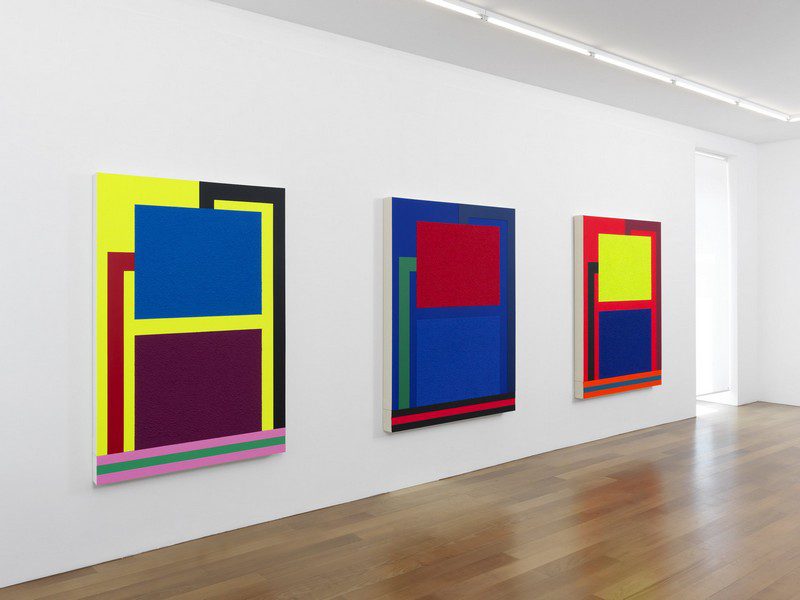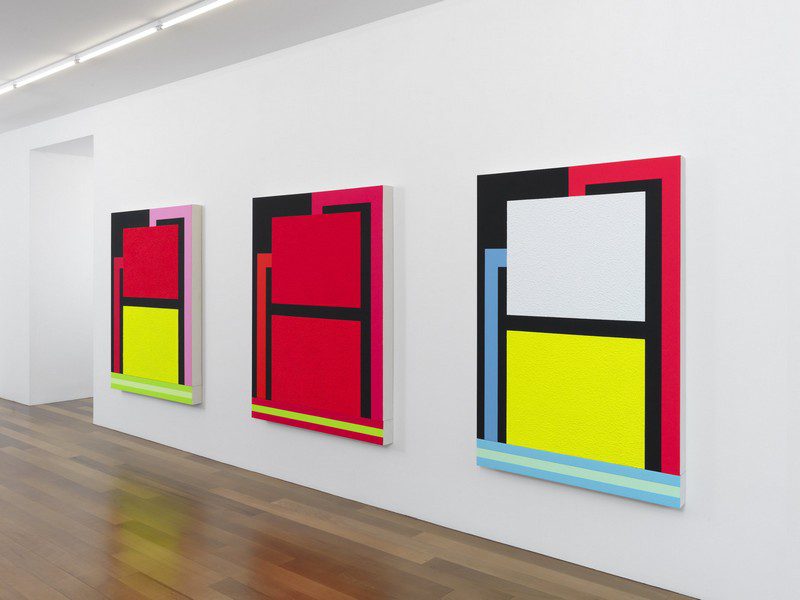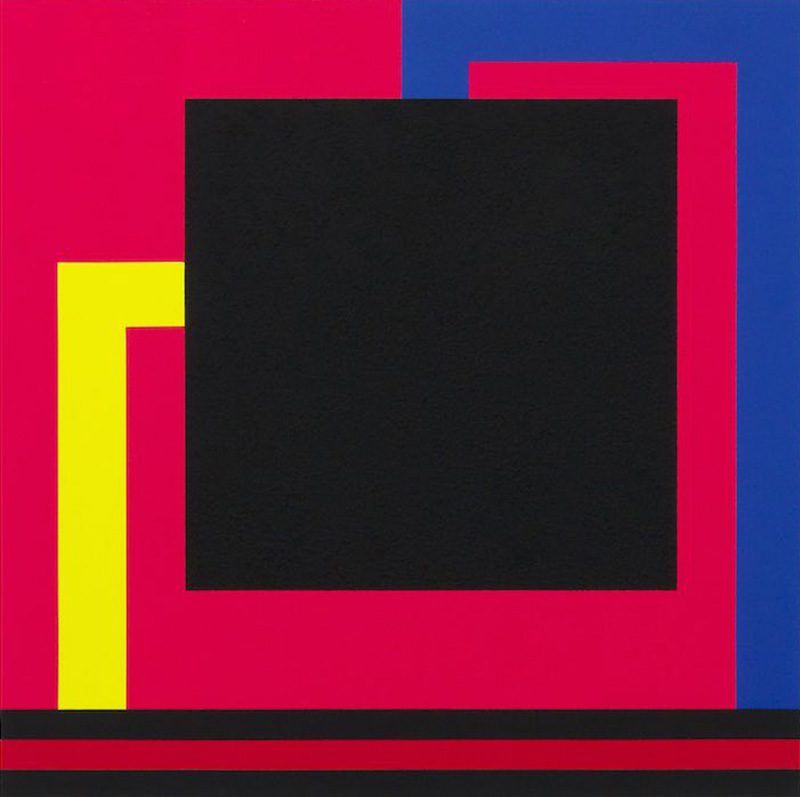ART-TRIBUTE:Peter Halley
Since the early 80’s, Peter Halley’s geometric paintings have been engaged in a play of relationships between what he calls “prisons” and “cells”, icons that reflect the increasing geometricization of social space in the world in which we live. As an essayist, Halley has also written about the prison cell as a metaphor for modern isolation. But his originality also lies in his use of color and texture.
By Dimitris Lempesis
Photo: Xippas Gallery Archive
His works resemble the Hard-edge paintings of Ellsworth Kelly, Brice Marden, and Kenneth Noland, but while the work of those artists may be described as “Abstract”, Peter Halley prefers the designation “Diagrammatic” for his precise, austere arrangements. He conceives of his vocabulary of squares, bars, and rectangles as coded referents to the way in which geometry pervades our world. Life in late-capitalist culture, according to Halley’s own critical writing, has been inscribed and circumscribed by geometric networks: think of the urban grid, the office tower, the high-rise apartment building, the correctional institution, the parking lot. Halley’s morphological investigations also focus on the traditional manner in which geometric abstraction has been perceived. By invoking the formal attributes of Minimalist Art: rigid planes of color, unitary shapes, and nonhierarchical compositions, and mapping a narrative sensibility onto them, Halley calls the supposed neutrality of such art into question. Halley has also written on art and culture throughout his career. His early essays, which address post-structuralism, post-modernism, and the digital revolution of the 1980s, have been anthologized in two books of collected writings. From 1996 to 2006, Peter Halley published index magazine, which featured in-depth interviews with creative people. As both author and artist, Halley has drawn upon the writings of the French theoreticians Michel Foucault and Jean Baudrillard to articulate and substantiate his dual critique of culture and art. Foucault’s analysis of the geometric organization of industrial society, particularly institutional modes of confinement, inspired Halley to transform a Minimalist square into a prison cell by adding three vertical bars to the form. In response to Baudrillard’s exploration of postindustrial culture: its reliance on information systems, media representation, and an economy that privileges image over product, Halley shifted to schematized depictions of enclosed spaces, linked to the world through a network of electronic, telephonic, and fiber-optic conduits. A selection of the above artworks also adding new forms and colors in his visual vocabulary, is in exhibition at the Xippas Gallery in Geneva.
Info: Xippas Gallery, Rue des Sablons 6, Geneva, Duration: 29/5-31/7/15, Days & Hours: Tue-Fri: 14:00-19:00, Sat: 12:00-17:00, www.xippas.net
